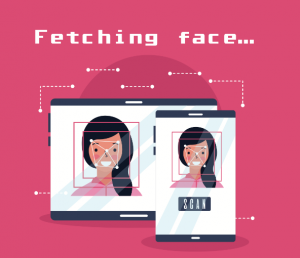OpenAI Unveils GPT-4o: A Deep Dive into the “Omni” Model Powering the Future of ChatGPT

By: Peter, Tech Expert at Playtechzone.com
OpenAI has once again pushed the boundaries of artificial intelligence with the introduction of GPT-4o, its latest and most advanced generative AI model. This new iteration, dubbed “omni” for its impressive ability to process text, speech, and video, promises to revolutionize how we interact with machines. As an avid follower of AI advancements, I’m particularly excited to delve into the capabilities of GPT-4o and its potential impact on various sectors.
Here’s a breakdown of what GPT-4o brings to the table:
- Multimodal Understanding: GPT-4o can seamlessly process and understand information from multiple sources, including text, speech, and video. This marks a significant leap forward in AI, enabling more natural and intuitive human-machine interactions.
- Enhanced ChatGPT Experience: GPT-4o is set to supercharge ChatGPT, OpenAI’s popular AI chatbot. Users can expect real-time responsiveness, nuanced voice recognition, and even the ability to interrupt and converse with ChatGPT more naturally.
- Advanced Visual Capabilities: GPT-4o empowers ChatGPT with superior visual understanding. From analyzing software code in a screenshot to identifying clothing brands in images, the possibilities are vast and incredibly exciting.
- Multilingual Proficiency: OpenAI claims that GPT-4o boasts enhanced performance in approximately 50 languages, breaking down language barriers and fostering global communication.
- Improved API and Accessibility: Developers can leverage GPT-4o through OpenAI’s API and Microsoft’s Azure OpenAI Service. The company promises faster processing speeds, reduced costs, and higher rate limits compared to its predecessor, GPT-4 Turbo.

GPT-4o: Ushering in a New Era of AI Interaction
During a live presentation, Mira Murati, CTO of OpenAI, emphasized the significance of GPT-4o’s multimodal capabilities, stating, “GPT-4o reasons across voice, text and vision. And this is incredibly important because we’re looking at the future of interaction between ourselves and machines.”
This statement perfectly encapsulates the transformative potential of GPT-4o. It’s not just about making AI models smarter; it’s about making them more accessible, intuitive, and seamlessly integrated into our daily lives.

Real-World Applications and Future Possibilities
The applications of GPT-4o are far-reaching, with the potential to impact various industries:
- Customer Service: Imagine AI-powered chatbots that can understand and respond to your queries in real-time, regardless of whether you type, speak, or even show them a picture of the issue.
- Content Creation: GPT-4o could revolutionize content creation, allowing users to generate articles, scripts, and even videos using a combination of text, voice commands, and visual prompts.
- Education: Imagine interactive learning platforms where students can engage with AI tutors who can explain complex concepts using a variety of media and adapt to individual learning styles.
- Accessibility: GPT-4o’s multimodal capabilities could be a game-changer for individuals with disabilities, providing more accessible ways to interact with technology and access information.

Addressing Concerns and Ensuring Responsible AI Development
While the potential benefits of GPT-4o are undeniable, it’s crucial to address the ethical considerations surrounding such powerful AI models. OpenAI acknowledges the risks associated with misuse, particularly concerning GPT-4o’s advanced audio capabilities. To mitigate these risks, the company plans to initially roll out support for audio features to a select group of trusted partners.
This cautious approach highlights OpenAI’s commitment to responsible AI development. As AI models become increasingly sophisticated, it’s essential to prioritize ethical considerations, transparency, and user safety.

OpenAI’s Commitment to User Experience and Accessibility
Alongside the launch of GPT-4o, OpenAI also announced a revamped ChatGPT user interface with a more conversational design and improved message layout. The company is also introducing a dedicated desktop version of ChatGPT for macOS, allowing users to interact with the chatbot using keyboard shortcuts and even discuss screenshots.
Furthermore, OpenAI is expanding access to previously paid features for free ChatGPT users. These features include memory capabilities for personalized interactions, file and photo uploads, and web search functionality for answering time-sensitive questions.
Conclusion
The introduction of GPT-4o marks a significant milestone in the evolution of AI. Its multimodal capabilities, coupled with OpenAI’s commitment to user experience and responsible development, have the potential to reshape how we interact with technology. As GPT-4o continues to evolve, we can expect to see even more innovative applications emerge, blurring the lines between the digital and physical worlds.
For further reading on AI and its impact on various industries, check out these resources:
- The Future of Life Institute: A non-profit organization dedicated to mitigating existential risks posed by advanced technologies, including AI.
- MIT Technology Review: A leading source of information and analysis on emerging technologies, including artificial intelligence.
- Stanford Artificial Intelligence Laboratory (SAIL): A renowned research institution at the forefront of AI research and development.








